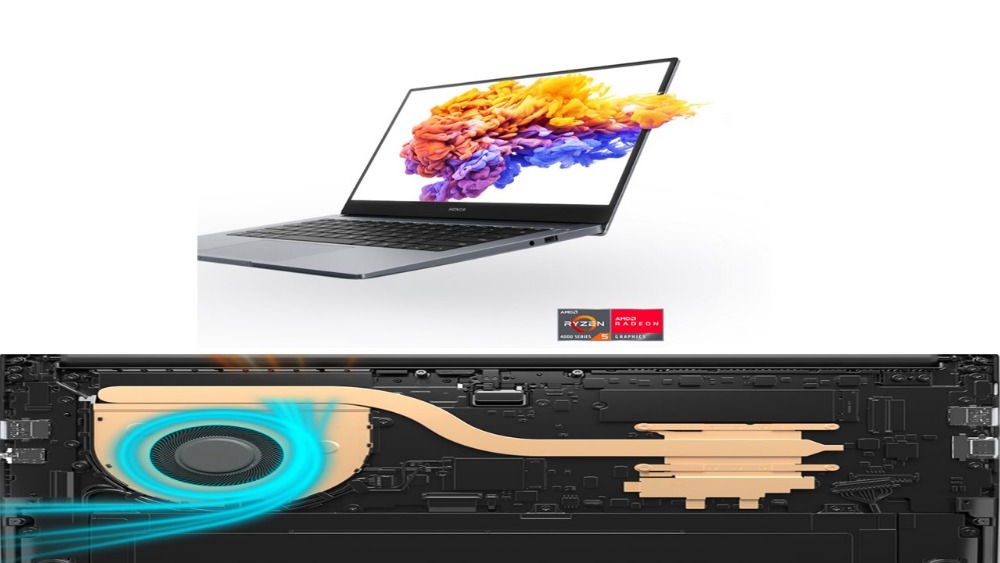Rob Aitken FBCS, Director of Know-how at Arm, considers how we are going to take care of the divergent requires of native climate change and tech-based native climate choices.
It’s laborious to think about any product with a effectivity curve like that of the silicon chip. Its invention and ongoing miniaturisation have pushed big advances in velocity and accuracy and reworked laptop programs from the legendary room-sized behemoths of yesteryear to the extraordinarily atmosphere pleasant handheld system you could possibly be using to study this textual content.
Moore’s Laws
We’re conditioned to depend on our devices to get larger with every expertise and that’s, partially, to do with our altering notion of Moore’s Laws. It’s been a gradual change, so it’s laborious to pinpoint precisely when it occurred, nonetheless in some unspecified time sooner or later, Moore’s distinctive thought – that primarily probably the most cost-effective transistor density degree doubles every 18 months – morphed proper right into a form of blueprint for progress.
This, in flip, created the expectation that every expertise will seemingly be sooner, cheaper and additional power-efficient than the one sooner than. Additional these days, though, this has shifted as soon as extra, ensuing within the contemplating that any enchancment in transistor density, even at loads bigger value, nonetheless represents Moore’s Laws. Such density will improve are important for the Moore mannequin progress we depend on, nonetheless with out a corresponding value revenue, they obtained’t give us the outcomes we’re used to.
In any case, now now we have an expectation of steady, speedy, exponential progress in complexity, which – alas! – is mirrored throughout the rising carbon value of setting up chips. We’re primed to take care of wanting further and to depend on that it should merely happen, at no cost to us.
Sadly, these expectations aren’t appropriate with the actual fact of native climate change and the worldwide essential to reach carbon web zero by 2050.
Sounding native climate code purple
Native climate change is undoubtedly considered one of many finest challenges the world has ever confronted. As a result of the IPCC these days signalled of their Sixth Analysis Report, we are literally at a level of Code Pink for humanity, meaning urgent movement is required.
Digital experience has prolonged been heralded as an necessary component in native climate choices, in a position to driving down emissions by unlocking efficiencies and reducing vitality consumption. Nonetheless regardless that it holds the necessary factor to decarbonising completely different sectors, the tech enterprise mustn’t depend on any explicit exemptions for itself. For every digital reply to native climate change, there’s an environmental value – an amount of carbon being emitted – that need to be weighed in the direction of the benefits created and minimised wherever potential.
As I wrote in a present weblog, the need to decarbonise compute, for the sake of our planet, means the experience roadmap can not prioritise processing power alone. To verify our web contribution is pushing the stats within the right path, now we have to guarantee that the underlying experience is as atmosphere pleasant as potential – and that signifies that our an increasing number of high-performance chips moreover need to be as low-powered as potential.
Specializing in effectivity per watt
At some stage, this all goes once more to heat. We don’t on a regular basis give it some thought, nonetheless heat is the first by-product of computing. CPUs and GPUs work by manipulating binary numbers and every time the price of a ‘bit’ of binary data is modified, electrical current flows, creating heat.
Usually, as further computation is being accomplished, further heat is generated. Collectively together with your mobile system, that heat is transferred to your native setting (your cellphone feels scorching, for example). In a closed setting like a data centre, that heat have to be explicitly cooled. Every joule of heat vitality produced in computing requires a minimum of one different joule for cooling, at minimal doubling the entire vitality needed.
The amount of vitality consumed by computation can fluctuate significantly between processors; effectivity per watt is important, every to the vitality consumption of the processor itself and, by extension, its environmental footprint. From a design standpoint, we have to assure that every watt is getting used efficiently – from avoiding pointless computation, to creating sure the power provide circuits are as atmosphere pleasant as potential.
There are numerous strategies throughout which we are going to receive this. Extraordinarily specialised designs, corresponding to personalised video processors, encryption engines and neural processors, can considerably reduce vitality consumption for his or her respective workloads, nonetheless are loads a lot much less programmable and fewer adaptable to new algorithms.
For you
Be part of one factor larger, be a part of the Chartered Institute for IT.
An issue for instantly’s architects at every stage throughout the {{hardware}} / software program program stack, is to permit as loads specialisation as potential, whereas retaining ample flexibility to satisfy future needs – significantly throughout the area of security, the place we may very well be assured that future assaults would require defences now now we have not however considered.
Being conscious of the place compute happens, relative to data, may very well be merely as important as being conscious of what compute is being accomplished. Shifting data makes use of vitality, with about 4 orders of magnitude distinction throughout the vitality required to retailer a bit in an space memory versus sending it off-chip by radio. In a analysis at Google, spherical 5% of datacentre vitality utilization was principally copying memory from one location to a distinct. That’s why making memory copy energy-efficient is a key component of CPU design.
Completely different examples embrace processing in or near memory, the place processing strikes to data pretty than data transferring to processors, and spatial or dataflow architectures, the place processing constructions may very well be set as a lot as bodily mimic the logical circulation of knowledge in an algorithm. In addition to, superior packaging methods, the place memory and processing die are stacked vertically, can lower communication power on the chip stage.
Attending to web zero
So, if we take effectivity to the acute, how low-power can we go? Can chips develop to be so atmosphere pleasant that they draw nearly no power the least bit?
The reply is bound, they will – and it’s one factor Arm’s evaluation group has been engaged on for a while. Clever system partitioning and shrewd {{hardware}} and software program program design can dramatically reduce power and vitality use … nonetheless there could also be, in any case, a caveat.
As Star Trek’s Lieutenant Scott famously talked about: ‘You can’t change the authorized pointers of physics.’ And a kind of authorized pointers is that the vitality required to value a capacitor is proportional to its measurement and the sq. of the voltage it’s charged with. So, the dynamic power of a chip depends upon three elements: its working voltage, the entire capacitance being charged – proportional to the number of bits switching – and the frequency at which these bits swap. Decreasing power close to zero means tuning these parameters close to zero as correctly.
Whereas zero itself isn’t however a wise objective, many ultra-low-power chips can in all probability be made ‘net-zero’ power, or close to it, by coupling them with their very personal vitality harvesters. Alternatively, for devices plugged into the grid, their train may very well be tuned so that their power draw coincides with extreme renewable availability. There’s usually a surplus of photo voltaic power in California spherical noon, for example.
Decreasing data centre draw
On the completely different end of the size, now now we have datacentres which, in step with the Worldwide Energy Firm, account for spherical 1% of the world’s full electrical power use. However, no matter an infinite enhance throughout the amount of knowledge being handled – and fears that the ICT enterprise would possibly use 20% of all electrical power by 2025 – attributable to a laser take care of effectivity and a shift to cloud and hyperscale datacentres, vitality demand stays flat.
There could also be, in any case, no room for complacency; processing requires will enhance over time, so we must always steadily try for bigger and bigger effectivity.
Firstly, we must always proceed to search out infrastructure strategically to benefit from naturally cool climates and areas the place sources of renewable vitality are plentiful. Secondly, we must always – as quickly as as soon as extra – make atmosphere pleasant compute a highlight. AWS’s Graviton2 processors, for example, which can be based totally on Arm Neoverse cores, ship a 40% value effectivity uplift on the same power consumption. This efficiently will improve the amount of labor achieved per watt whereas concurrently decreasing the charge – and the carbon footprint.
That’s the form of win-win state of affairs now we have to pursue if we’re to land on the proper aspect of historic previous. Nonetheless, even proper right here, we must always sound a discover of warning: now we have to protect, as far as potential, in the direction of the entice of the Jevons paradox – throughout which technological progress will improve effectivity nonetheless demand will improve, meaning no complete monetary financial savings are realised.
Decarbonising compute
The urgency of the state of affairs requires that we take an ‘all arms on deck’ technique to attaining the world’s web zero goal. No person methodology alone is sufficient and no sector can act in isolation. Nonetheless, to guarantee that experience contributes to tackling native climate change with out exacerbating it, we would like compute to be as atmosphere pleasant as potential, wherever it happens.
I think about we’ll see an rising number of personalized chips devoted to bettering effectivity per watt for explicit workloads like video and AI, and as well as for inside data centre operations like job allocation and memory change. We’ll see bodily partitioning and distribution of strategies to reduce communication vitality – compute in and near memory, dataflow designs, stacked die and so forth.
When Moore’s Laws lastly slows to a crawl, we may even see a resurgence of methods like adiabatic clocking and asynchronous circuit design as a approach of pushing effectivity via design effort.
Lastly, delivering an rising variety of compute effectivity whereas bettering vitality effectivity is what Arm’s companions ask from us day-after-day, so decarbonising compute makes every enterprise and environmental sense. What’s further, failure isn’t an selection. There is not a Planet B.
It’s an unimaginable drawback, and we’re just one part of the puzzle. Luckily, now now we have laptop programs to help us decide it out.







